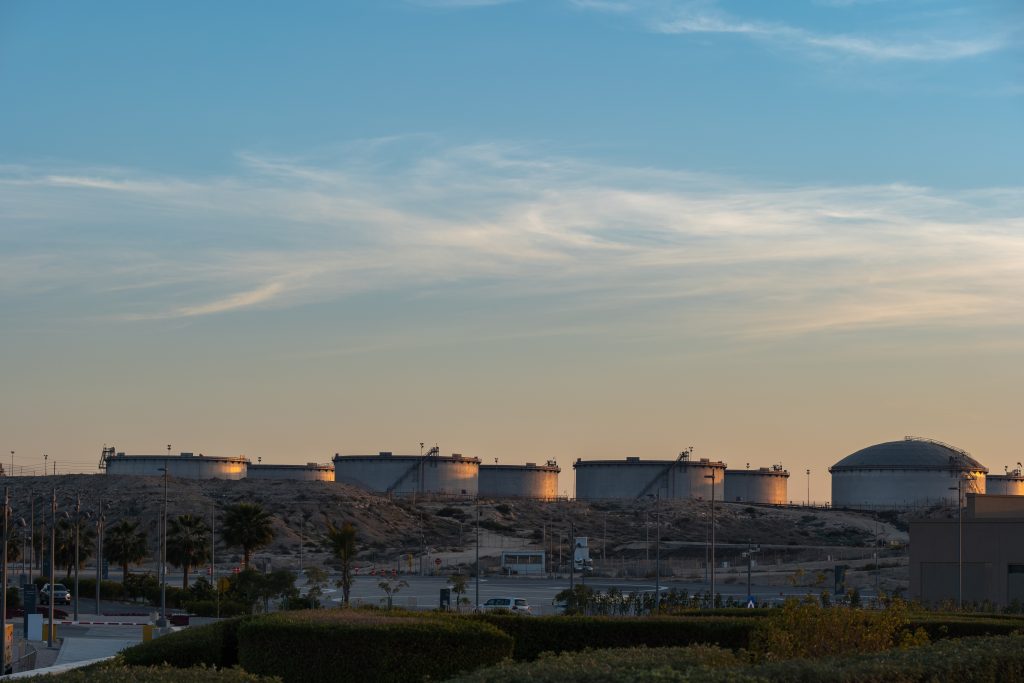In the face of declining profits, Aramco has chosen to preserve its substantial $31 billion dividend distribution to the Saudi government and other shareholders, providing critical financial support to the kingdom’s economy amidst a challenging budget deficit scenario.
As the globe’s preeminent oil exporter, Aramco’s robust dividend payments are becoming increasingly vital for the state, especially as the price of crude oil lingers below the threshold needed for the nation’s budget equilibrium. Crown Prince Mohammed bin Salman is actively investing in ambitious projects like the futuristic city of Neom, doubling down on tourism, and acquiring interests in international sports franchises to revolutionize the country’s economic landscape.
Aramco has announced that its dividend payments, inclusive of a special dividend, will see an uptick this year compared to 2023. This escalation in payouts is poised to bolster the funding of the kingdom’s extensive expenditure programs, mirroring the strategy of other global oil titans like Shell Plc and BP Plc that continue to prioritize shareholder returns.
Analyses by Bloomberg Economics suggest that to balance its budget, which encompasses domestic expenditure by its sovereign wealth fund, Saudi Arabia requires oil to be priced at approximately $108 per barrel. Current benchmarks for crude oil in London hover near $83 a barrel.
Concurrently, Saudi Arabia has postponed certain projects within its economic transformation agenda beyond 2030 and moderated its aspirations for Neom. The nation has witnessed three consecutive quarters of economic decline, accompanied by six quarters of budget deficits.
The first quarter recorded a 14% drop in Aramco’s net income, totaling $27.3 billion, a decrease from the previous year. The company’s free cash flow, the net of operational cash flow and capital expenditures, amounted to $22.8 billion during this period, which was below the total dividend commitments. Nonetheless, Aramco’s stock prices remained stable in Riyadh.
Analysts from Morgan Stanley, including Martijn Rats, observed that the cash flow exceeded their projections, largely due to lower-than-anticipated capital expenditures. Aramco reported a capital spend of $10.8 billion in the quarter, against a projected annual spend of $48 billion to $58 billion. This figure is expected to rise throughout the decade as Aramco advances on significant endeavors such as the Jafurah gas development aimed at augmenting the supply of fuel for power generation and industrial use.
Despite these financial dynamics, Saudi Arabia is revisiting plans to offer additional shares of Aramco to the market, potentially generating billions in revenue. Investors, having previously expressed reservations about the kingdom’s valuation expectations and the yields compared to industry counterparts during Aramco’s 2019 initial public offering, will continue to monitor the Saudi economy and oil production levels closely.
The kingdom plays a leading role in the Organization of Petroleum Exporting Countries (OPEC) and its allies, advocating production limitations to avert excess supply and bolster prices. The consortium is set to convene on June 1 to deliberate on the extension of the current production restrictions into the latter half of the year. A consensus among traders and analysts surveyed by Bloomberg anticipates the extension of these curbs, possibly until the end of 2024.
